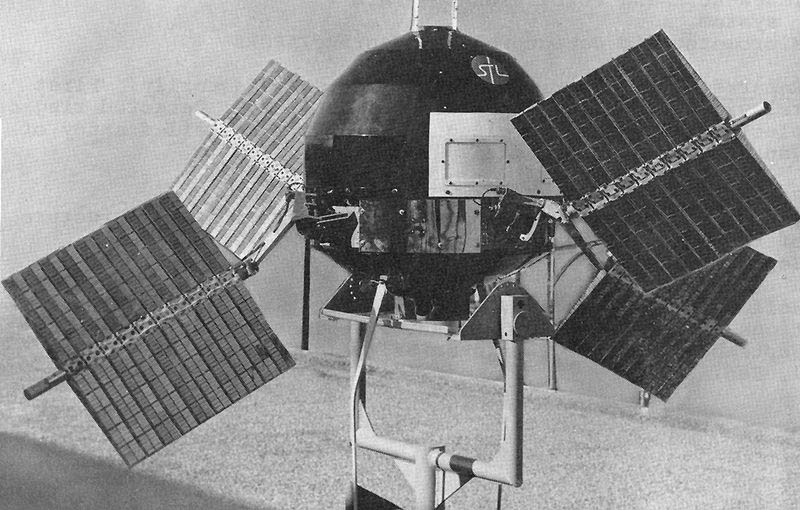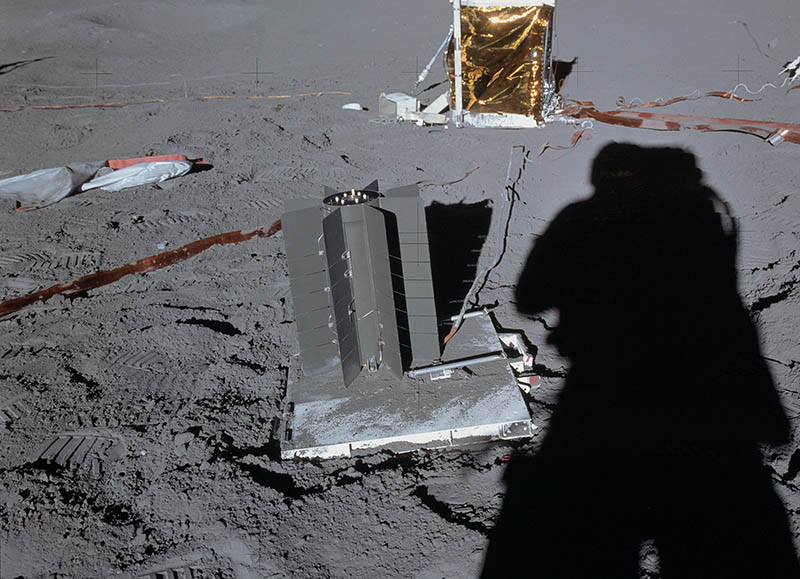Title image shows the deployed solar arrays of Intelsat 35e geostationary communications satellite during assembly & testing in June 2017. Image Credit: Intelsat
Early spacecraft required only a few Watts of power, similar to that required by an LED bulb. Today, a communications spacecraft in Geostationary orbit might require more than twenty kilowatts of power, that’s enough to power over forty European homes, or about fifteen in the USA. And, some defence spacecraft may require hundreds of kilowatts.
The first ever spacecraft, Sputnik-1, didn’t have any way of generating electrical energy. Instead it operated off batteries that, once depleted, meant the spacecraft simply stopped working. This type of single use battery is termed a primary battery, and it will typically have a long ‘shelf-life’ meaning it will hold its charge for long-time until it is required. This was also how the first US spacecraft, Explorer-1, was powered.
But, obviously, the operations of the spacecraft are limited by the capacity of the battery.
The only external source of energy available to a spacecraft with reasonable flight heritage is solar radiation, and the use of solar, or photovoltaic cells, which convert light into electricity. By connecting multiple solar cells together, we can build what is called a solar array, and so providing the required power levels.
The first solar electric powered spacecraft was the US Navy spacecraft Vanguard-1, in March 1958, described by the Soviet Premier, Nikita Khrushchev, as “the grapefruit satellite” due to its size. By using solar cells, the spacecraft was able to operate for six years until communications were lost. However, the spacecraft itself is likely to remain in-orbit until, perhaps, the 23rd century.
The following year, the NASA spacecraft Explorer-6 was the first to use large wing-shaped solar arrays that unfolded once the spacecraft was in-orbit.

Today, the use of unfolding solar arrays is common as it allows the solar array to be bigger than it could otherwise be. In Earth orbit it is common to assume that 1366 Watts per square metre of array is available. However, the true value varies with the square of the distance from the Sun, which means you get a slight variation as the Earth orbits the Sun. But, means very dramatic increases as you go towards the inner planets of Venus and Mercury, and significant decreases as you go outwards to Mars and beyond.
However, not all of this energy is actually available as Solar arrays are only able to convert a limited amount to electrical energy. Typical arrays today can convert around 30% of the available energy into electricity, meaning a communications spacecraft in Geostationary orbit might require over fifty square metres of solar arrays.
Of course, solar electric power is only available when in sunlight. Meaning it’s normal to also include rechargeable, or so-called secondary batteries. But, this also means that the solar arrays need to both power the spacecraft, and charge the batteries whilst in sunlight.
For some spacecraft where a battery and solar arrays combination isn’t practical, engineers might choose to use what is called a fuel cell. These are often used on crewed missions of up to a few weeks. In a fuel cell, hydrogen and oxygen, or a similar combination, are combined to produce electricity and water, a useful by-product on crewed missions. Fuel cells are quite efficient as the energy conversion is direct from chemical-to-electrical, skipping the usual combustion step of something like an internal combustion engine.
As we move to Mars and beyond, solar electric power becomes less and less available. And, while some spacecraft such as Juno, at Jupiter, have used solar power beyond Mars, engineers have tended towards nuclear power sources. Specifically, Radioisotope Thermoelectric Generators, or RTGs, which convert heat released from the decay of radioactive material into electricity.
RTGs have been used on spacecraft for decades to provide power levels of several hundred Watts. RTGs have the advantage of supplying power all the times, but also require radiation shielding to protect the spacecraft from the radiation. They are also rather inefficient, converting less than 10% of the heat into electricity. But, this can useful in the outer solar system as it can help keep a spacecraft warm in the absence of the Sun.
RTGs have been used on a range of missions, from deep-space missions, to Mars rovers, and even providing power for the Apollo Lunar Surface Experiments Packages, ALSEP, left on the Moon by various Apollo missions.

It should be noted that RTGs and nuclear reactors are very different. RTGs have no moving parts making them quite robust, and you don’t have a chain reaction in an RTG, meaning it can’t explode like a reactor can. The USA and Russia have both flown nuclear reactors in space but they are much less common, although due to the potentially large power levels provided engineers do keep returning to them as a potentially promising power source for the future of deep-space exploration.
Electronic & Electrical Engineering
Royal College Building
204 George St.
Glasgow G1 1XW